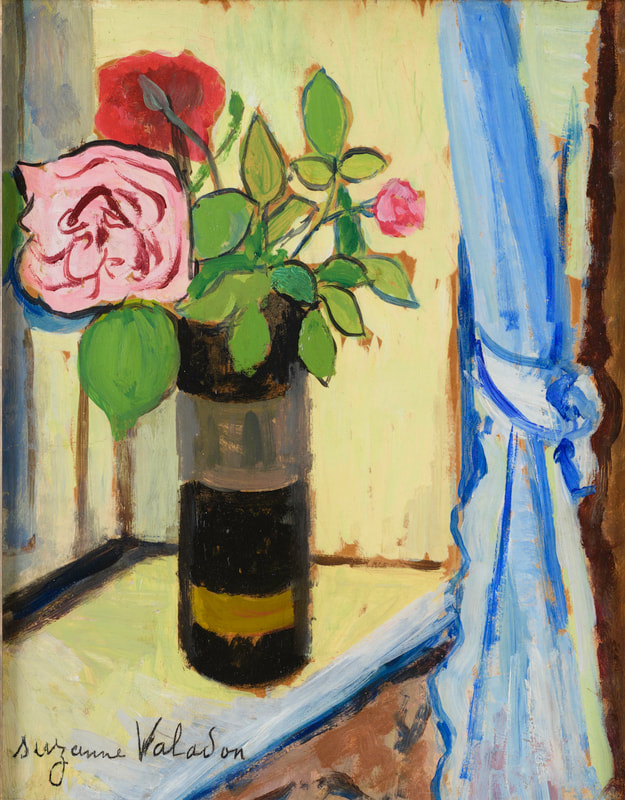|
Suzanne Valadon
French, 1865 – 1938 Bouquet of Roses in a Shell (Bouquet de Roses dans un Obus), ca. 1919 Oil on card 12 x 9 ½ inches Saint Vincent Art & Heritage Collections Gift of Michael and Aimee Rusinko Kakos |
A formidable leader of the Parisian avant-garde, Suzanne Valadon was one the most influential figures of Post-Impressionism whose work and personality challenged the social conventions of the day. Reared in poverty, she initially apprenticed as a seamstress, waited tables, assisted at a market stall, and is believed to have joined the circus, performing as a trapeze acrobat. At 15, Valadon began to model for numerous artists working in the bohemian quarter of Montmartre, including Pierre Puvis de Chavannes, Pierre-Auguste Renoir, and Henri de Toulouse-Lautrec. During sessions in which she held challenging poses for extended periods of time, Valadon observed their techniques and taught herself how to draw. Encouraged by the painter-sculptor Paul-Albert Bartholomé, she began exhibiting her work in 1894 at the Société Nationale des Beaux-Arts. Edgar Degas, an early collector of her work, admired her uncompromising spirit and lovingly referred to her as “the terrible Maria,” referencing her birth name, Marie-Clémentine. Among her most ardent supporters, Degas encouraged her to paint and introduced her to printmaking.
Valadon created this still life shortly after the conclusion of World War I during one of the most prolific periods of her career. Opposite a tied back blue curtain, an artillery shell holds three roses harvested from the artist’s garden located outside her studio in Montmartre. Painted with abandon, the entire composition is comprised of bold, luminous color and confident lines. Valadon’s use of a weaponry remnant parallels the practice of soldiers and civilians who refashioned instruments of war to create decorative household objects, known today as trench art. André Utter, Valadon’s second husband, enlisted in the French armed forces at the onset of the War. In 1917, he was wounded in battle with the bullet lodged too close to his heart to be removed. Simultaneously, Valadon repeatedly attempted to help her son, Maurice Utrillo, a successful artist she had taught to paint, whose sustained battle with alcohol and depression required psychiatric treatment. Having endured the bombardment of Paris, Valadon had become intimately connected to the conflict and its aftermath. Bouquet of Roses in a Shell can be understood as a response to the trials of war as Valadon announces the triumph of life over tremendous loss. |

